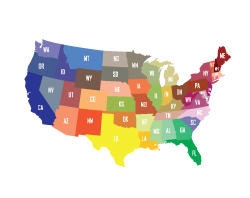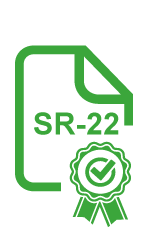DUI clients are often paralyzed with fear, never having been part of the criminal justice system before. Charged with a DUI, their freedom, their driving privileges, their good name hanging in the balance, they all wonder what the process is about that will determine whether they will be branded a criminal for the rest of their lives. The purpose of this article is to provide an explanation to all who wonder how a DUI jury trial is conducted; more information about: Motions In Limine, Jury Selection, Opening Statement, Prosecution’s Case, Defense Case, Closing Argument and Jury Deliberations.
What will not vary is the process by which these cases are brought to trial. If you or someone you care about has been charged with a DUI, DWI, or some other alcohol-related driving offense (no matter what acronym is used to describe it), it is of paramount importance that you locate a skilled drunk driving defense lawyer to help. Once that lawyer is identified, the investigation completed, and the DUI lawyer has announced ready for trial, the following is a primer to help ease your nerves and know what to expect.
The “Trailing” Period
The Constitution guarantees each criminal defendant the right to a speedy and public trial. Because of the congestion found in many courthouses, the right to a speedy trial has found a particular definition. In California, a DUI defendant who is in custody has the right to a trial that commences within 30 days of their arraignment. An out-of-custody defendant has the right to commence their trial within 45 days of their arraignment. These dates can (and often are) extended at the request of the client or their DUI defense lawyer, to allow investigation into every aspect of the case.
Once a trial date is set, it is usually expressed as a “zero of ten date,” meaning that the DUI defendant’s speedy trial rights will not be offended if the DUI trial begins on the trial date, or within 10 days of that date. (If the tenth day falls on a Saturday or Sunday or holiday, the next court day would be the “last day” for trial.) If the trial does not commence on or before the expiration of the last day for trial, the case must be dismissed. Commencement of a DUI trial is the swearing of the jury panel.
Motions in Limine
This is a term for those motions that are brought just before the commencement of a jury trial. In California, these are often referred to as “402 Motions,” alluding to the section of the California Evidence Code that relates to these motions.
The purpose of the Motions In Limine is to get a ruling before trial on any items of evidence that either side expects will come up during the trial. For example, it is common in DUI trials for the prosecutor to elicit from the arresting officer that they have pulled over many, many people for suspicion of drunk driving, but that they have only arrested some fraction of that amount. The prosecutor will then use that fact to argue that the officer has extensive experience in discerning those who should be let go from those who shouldn’t and that the officer is both skilled and fair-handed. I always bring a Motion In Limine to keep this testimony excluded, and 90% of the time, that motion is granted.
DUI defendants can and should expect that their lawyer will bring a number of the pretrial motions just prior to jury selection, or even during jury selection (but outside the presence of prospective jurors). There is no requirement to give the prosecutor advance notice of these DUI motions, and one tactical consideration is to bring these motions without giving advance notice so as to ensure an advantage over a less-prepared adversary.
Jury Selection
Once all the pretrial motions are resolved, the jury must be selected. In California DUI cases, 12 jurors (and one or two alternate jurors) are selected. Some states only allow 6 jurors. However, in all states that allow DUI jury trials, one thing is certain: the jury cannot convict the defendant of drunk driving unless ALL jurors agree that the prosecutor has proved each element of the case beyond a reasonable doubt. If there is reasonable doubt of the defendant’s guilt, he or she is entitled to a verdict of not guilty. The jurors must be unanimous if there is to be a conviction; if some jurors vote one way, and other jurors another, that is called a “hung jury” and often results in the dismissal of the charges. It is a win for the defense no matter what.
Jury selection begins with a panel of prospective jurors being sent to the courtroom. In most cases, 45-50 prospective jurors will be sent. The clerk of the court will “swear the panel,” which is the technical commencement of the trial for purposes of the speedy trial rights discussed previously. The clerk will typically ask the jurors to stand up and raise their right hands and swear that they will truthfully answer all questions put to them regarding their qualifications to sit as jurors in the case.
The judge may “time-qualify” the panel, letting the prospective jurors know that this is a DUI case, that it is expected to last a given number of days (which will vary depending upon the number of witnesses, usually 3-4 days in a court that allows a good amount of trial time), and to see if any of the prospective jurors have any conflicts that would prevent them from sitting as jurors in the case.
Next, a number of prospective jurors will be called at random from the audience and seated in the jury box. There will be at least 12 prospective jurors summoned, and many judges employ a system known as a “six pack,” where a total of 18 prospective jurors are questioned at the same time. Once 12 (or 18) prospective jurors are seated, the judge will typically ask each juror to give their answers to several questions that are on a bulletin board at the front of the court.
The judge will go from juror to juror, asking them to answer the questions and to elaborate on any answers triggered by reference to the questionnaire. If the answers suggest a juror cannot be fair and impartial, because of a bias towards either side, that prospective juror can be challenged “for cause.” Judges are reluctant to relieve jurors for cause, as that depletes the limited number of prospective jurors, and can cause massive delays and inconvenience. Therefore, even if a juror indicates “yes” answers to questions about MADD and relatives in law enforcement, the judge will attempt to rehabilitate those jurors by asking if they can put aside any feelings they may have and be fair to both sides. If they say yes (even if everyone knows they are lying), they will not be excused for cause.
(This is important because the jury is picked by a process of elimination, to be described further below. The prosecutor and the DUI defense lawyer have a limited number of peremptory challenges or challenges that can be used for any reason. In California DUI trials, each side has 10 peremptory challenges. If the DUI defense lawyer can get rid of a juror they don’t like by using a challenge for cause, which is unlimited, it saves preemptory challenges, which are limited.)
Once the jurors have all introduced themselves and answered some of the preliminary questions put to them by the judge, the lawyers get a chance to follow up by asking questions of the 12 or 18 prospective jurors. In California, the defense lawyer goes first. This is a bit unusual since the prosecutor goes first with everything else because they have the burden of proof. Other states may be different in terms of who goes first.
But no matter what state the trial takes place in, jury selection is a critical part of the trial process. Most experienced DUI trial lawyers agree that many cases are won or lost in jury selection. Jury selection in DUI cases is the first opportunity for the drunk driving defense lawyer to start to build a rapport with their prospective jurors, and get these 12 or 18 strangers to start liking him or her (and more importantly, start like the defendant).
Most judges impose strict time limitations on the lawyers during the jury selection process. This is true in both DUI and non-DUI cases alike. It is unfortunate that courts are so busy, and judges under such incredible pressure to move things along quickly, that quality is sacrificed in favor of expediency. However, the skilled drunk driving defense lawyer will understand that this is the time to start developing themes, planting seeds that will be brought to bear later in the opening statement, cross-examination, and closing argument.
After the defense lawyer uses his or her limited time to question the panel, the prosecutor does the same. Finally, at the end of the first round of questioning by the lawyers, the judge entertains an argument (outside the presence of the jurors) as to challenges for cause. As noted, these challenges for cause are limitless but tough to make out. The DUI defense lawyer will need to demonstrate that a particular juror simply cannot give the defendant a fair trial.
The judge then asks each lawyer about peremptory challenges, which are done in an alternating sequence, usually beginning with the prosecutor. The judge will indicate that the first preemptory is with the People; the prosecutor will then indicate which one of the first 12 jurors they wish to excuse. After that person is asked to leave, the DUI defense lawyer has the next challenge; after the defense lawyer excuses a juror, the prosecutor excuses another, and so on.
Each side only has a limited number of challenges to exercise. (In California, 10 peremptory challenges are available to the DUI defense attorney.) The jury is selected when one of two things happen: either both the prosecutor and defense lawyer accepts the 12 people sitting in the box, or both sides run out of challenges and the jury consists of those 12 that are left.
There is an infinite number of strategic considerations that go into jury selection, and a qualified DUI defense lawyer, with experience trying cases in his or her jurisdiction, will be the best resource regarding any DUI, DWI, or drunk driving case.
Opening Statement
Once the jury has been selected, the parties to the DUI case have an opportunity to make their opening statements. Since the prosecutor has the burden of proof, he gets to go first (he is the only one in the “proving” business; the defendant has no obligation to prove anything). After the prosecutor gives an opening statement, the defense lawyer has the choice of giving his or her opening statement at that time or reserving the defense opening statement until after the prosecutor has concluded his case. Generally, the defense lawyer will give their opening statement right away, so the jury can have the defense’s views in mind when they are listening to the prosecution’s case.
The judge typically indicates to the jury that what the lawyers say is not evidence, that they are simply forecasting what they expect the evidence to be, and that counsel is not permitted to argue the case at that time. The experienced DUI defense lawyer will seize the opportunity and argue the hell out of their case.
Experienced DUI defense lawyers are righteously cautious about this very important phase of the trial. Often, it is not known exactly how certain aspects of the case will play out; any promises that are made in the opening statement and not delivered later in the case will certainly be brought up by the prosecutor. It may not yet be clear whether the defendant will testify. Often, the most compelling evidence will arise only from the cross-examination of the arresting officer or prosecution expert, and the details won’t be known when the opening is made.
Prosecution’s Case
The first witness in most DUI cases is the arresting officer. Sitting there, listening to the direct testimony of the arresting officer in a drunk driving case is usually the most painful part of the trial, for defense attorneys and clients alike. The fact is that if the arresting officer doesn’t have some damning stuff to say about the drunk driving arrest, the case should have gone away long before trial.
However, it is usually the cross-examination of that officer that becomes the bright spot of the case. The seasoned DUI defense lawyer will love cross-examination of the arresting officer as much or more than any other phase of the trial. Cross-examination has been described as the greatest legal engine towards the ascertainment of truth, and it is quite true in the DUI case.
As a general proposition, jurors expect that witnesses will always favor the side that calls them. There is, therefore, a certain discounting that goes on in the minds of the jurors. Of course, the defendant’s friend will say he wasn’t drunk, of course, the defendant’s mother says he is a good boy, and so on. However, the points that are scored on cross-examination, are the ones that make the case.
Cross-examination in a DUI case, or any criminal defense case, for that matter, is not so much examination as it is the lawyer testifying. The most effective cross-examination occurs when a lawyer makes a short, declarative statement, and forces the witness to answer “yes.” Each new “question” by the lawyer adds one new fact at a time, and the questioning proceeds to a logical goal, one goal at a time. When done in this fashion, cross-examination is one of the most satisfying and effective portions of the trial for the DUI defendant.
The second witness for the prosecution is typically a chemist from the crime lab. This person will give information regarding the breath or blood test, offer opinions regarding the field sobriety tests, and information about impairment from alcohol and how that impacts driving ability.
Just like cross-examination of the arresting officer, cross-examination of the prosecution’s expert in a DUI case is incredibly satisfying and can be extremely profitable for the DUI defense attorney and his client.
In order to prove the defendant’s guilt, the prosecution usually focuses on four things: driving pattern, physical appearance, field sobriety test performance, and chemical test results. Cross-examination of the prosecution witnesses is designed to create reasonable doubt about how the defendant’s performance in each of these areas is to be perceived and to shift the focus from how the defendant did, to how well the tests were administered.
Defense Case
Once the prosecution has rested, including the introduction of any exhibits that are referenced during this phase of the trial, the defense will make a motion for a dismissal on the basis that there is insufficient evidence to allow the case to get to the jury, that no reasonable jury could convict the defendant based upon the evidence offered by the prosecutor. These motions are routinely denied, but granted often enough that the competent DUI lawyer should not be deterred from making them in every case.
Now the DUI defendant has an opportunity to call witnesses to offer testimony to support his or her case. This may be in the form of civilian witnesses who were with the defendant and can testify to his or her lack of impairment from alcohol; it may be a “no driving” defense, where the real driver comes forward and admits to having been behind the wheel; it may be a defense expert, who will scrutinize the field sobriety tests, chemical tests and offer an opinion that the defendant was under the legal limit and not impaired at the time of driving.
During the defense case, the DUI defense lawyer is not allowed to ask leading questions of defense witnesses. Instead, it is the prosecutor’s opportunity to ask leading questions of the defense witnesses while they are on cross-examination. The drunk driving defense lawyer breaches his duty to his client by not preparing his or her witnesses to undergo this cross-examination. This is where a significant amount of trial experience comes in handy; it is the lawyer’s job not to allow the witnesses to appear to be dishonest.
Closing Argument and Jury Deliberations
When all the witnesses have been examined, and all the evidence received, it is time for closing arguments in the DUI trial. This is the opportunity for the lawyers to let it all hang out, and explain to the jurors why the evidence does not allow for the conclusion that the prosecutor has met his or her burden: to prove each and every element of the case beyond a reasonable doubt, to the exclusion of every reasonable doubt.
It is at this point that the judge may read some jury instructions. Most of the jury instructions that are used in DUI cases come from “pattern” or canned jury instructions. In California, for example, we have Caljic, which stands for California Jury Instructions, Criminal. It is a two-volume set of all the laws to be applied in a variety of cases. However, the law also recognizes that the pattern instructions may not be sufficient. Therefore, lawyers are allowed to submit customized or “pinpoint” jury instructions that are tailored to the particular facts in a given case.
A successful closing argument in a DUI case will touch on some of the key jury instructions that apply, such as guilt beyond a reasonable doubt, that the defendant’s out of court statements are to be viewed with caution, and that in circumstantial evidence cases if there are two reasonable views of the evidence, the jury must adopt the one that points to innocence. The outstanding closing argument weaves the facts with the law, without overlooking emotion, pace, and timing. An excellent closing argument will resonate with jurors.
And resonate it must; because the prosecutor has the burden of proving the defendant’s guilt, he gets to argue first and last. The prosecutor’s argument is the first argument heard, and, because it is their burden, the last word also belongs to them. The most frustrating moment for any defense lawyer is when they are sitting down, having argued, and must listen to the prosecutor without the opportunity to stand up and reply. (The lawyer still may make objections, and a well-placed objection will do much to derail the prosecutor’s closing.)
Following the argument of both counsel and final instructions from the judge, the jurors retire to deliberate the fate of the accused. If all jurors agree to the defendant’s guilt, a guilty verdict is returned. If all jurors agree on the defendant’s innocence, an acquittal or verdict of not guilty is returned. Or, if some jurors view the evidence one way, and some the other way, the jury will “hang.” This is a win for the defendant. Many cases are dismissed following a hung jury. Alternatively, those that are not dismissed may be the subject of very generous plea-bargain offers. It is rare that a hung jury case will be re-tried, although it does happen. It will depend upon the facts of the case, and the way the jury is split. An experienced DUI defense lawyer will know just what to do in each given situation.







